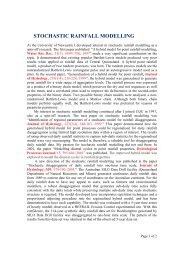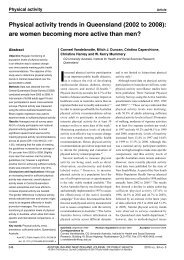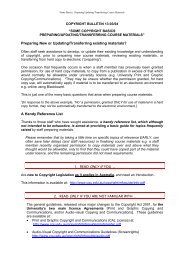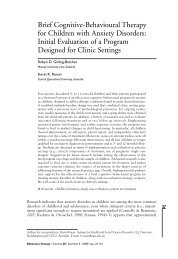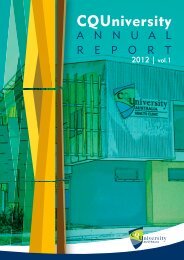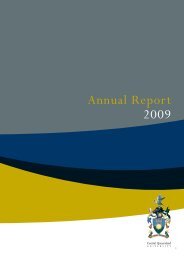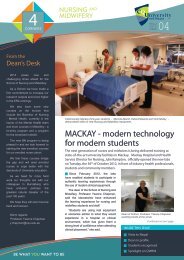View mobile device version - Central Queensland University
View mobile device version - Central Queensland University
View mobile device version - Central Queensland University
Create successful ePaper yourself
Turn your PDF publications into a flip-book with our unique Google optimized e-Paper software.
Be: Engaged<br />
29<br />
Read,<br />
write<br />
and<br />
tweet<br />
As social media begins to find its place inside Australian classrooms, students<br />
will find participating in class the ‘cool’ thing to do, discovers Jacob Lowry.<br />
PHOTO: PETER LAWRENCE<br />
The way we connect<br />
with each other is<br />
rapidly changing.<br />
Gone are the days<br />
when we needed to meet up<br />
in person or pick up the phone<br />
on the wall to catch up. All<br />
you need in 2012 is a pair of<br />
opposable thumbs and you<br />
can have a thriving social life.<br />
Social media is the way of<br />
the future, allowing millions<br />
to connect with millions<br />
more. It’s now the preferred<br />
method of communication<br />
for teenage socialites and is<br />
rapidly encompassing other age<br />
groups as well. But could it be<br />
the future of education?<br />
Research conducted by Dr<br />
Michael Cowling and Jeremy<br />
Novak from CQ<strong>University</strong>’s International Education Research<br />
Centre has revealed a method of teaching and learning that could<br />
make schoolwork more accessible and attractive than ever before.<br />
Twitter, the social networking site home to Ashton Kutcher’s rants<br />
and over 200 million ‘tweets’ per day, could revolutionise the way<br />
class discussion is approached by both teachers and students.<br />
The pair used Twitter as the main discussion medium over<br />
a single semester in a Diploma-level management course on<br />
CQ<strong>University</strong>’s metropolitan campuses. Instead of using the ‘raised<br />
hand’ method, students would respond to questions on Twitter,<br />
using cyber-threads to replace vocal debate. The researchers<br />
discovered that the in-class participation rate was much higher<br />
than using traditional discussion, and found the learning experience<br />
was far more engaging and involved.<br />
On the back of their successful study, Dr Cowling believes the<br />
time is nigh for Twitter to become commonplace not only in the<br />
lecture theatre, but in the high school classroom as well. He believes<br />
that using social media could unlock the potential of thousands of<br />
disengaged students.<br />
“Our research is part of a<br />
broader focus on technology in<br />
education going forward,” he says.<br />
“We know most students are active<br />
on social media anyway, so by<br />
giving them another use for it we<br />
can hopefully encourage higher<br />
participation rates in classes. Quite<br />
often we see students who have<br />
valuable input to a class discussion,<br />
but are too shy to voice it. As the<br />
old adage goes, if ‘one person<br />
raises their hand, there are 10<br />
more thinking the same thing’, so<br />
hopefully by implementing Twitter<br />
into these sorts of situations we’re<br />
giving these students a voice.”<br />
The work of Cowling<br />
and Novak follows a recent<br />
announcement by Apple in January<br />
that they intend to release ‘digital<br />
textbooks’ on iPads, allowing students to view animations, videos<br />
and extra material that can enhance traditional text-based study<br />
notes. “For teachers, the students sitting in front of them today<br />
are different. They are digital natives, they’ve grown up using this<br />
technology, they’re comfortable with it. This is the culture of the 21st<br />
century student, so let’s use it to engage them.”<br />
Initial indicators have the researchers optimistic about the<br />
adoption of Twitter into pedagogy, yet how will the students fare<br />
with having social media sanctioned during class time? The duo’s<br />
theory brings into question the effect Twitter could have on the<br />
educational institution as a whole. Are students likely to use it to<br />
engage with teachers more? Or will it just be a better way to kill time<br />
between lunch breaks?<br />
Cowling concedes that teaching methods will need to be<br />
drastically altered to make this a mainstream teaching method.<br />
The aging demographic of high school and tertiary educators<br />
and the possible distractions of the Twitter-sphere could make<br />
the adoption of Twitter quite a challenge, but rewarding for both<br />
teachers and students. <br />
ISSUE 13





